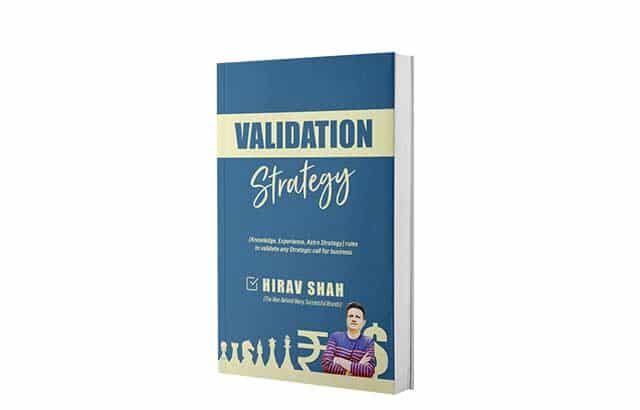Table of Contents
Introduction: The Journey of Business Growth
In the heart of a vibrant city, two entrepreneurs set out on their respective paths to success. Sarah, the owner of a bustling bakery, needed to upgrade her ovens to meet the growing demand for her signature pastries. Meanwhile, David, a seasoned IT consultant, sought to lease cutting-edge servers to support his expanding client base.
Excited by the prospects of scaling their operations, Sarah and David delved into equipment leasing agreements with enthusiasm. However, their journeys were not without challenges. Sarah encountered unexpected maintenance costs that strained her budget, while David faced difficulties with lease terms that didn’t align with his clients’ project timelines.
Their stories underscore a common reality: the decision to lease equipment can be fraught with pitfalls that could derail business growth if not navigated wisely.
5 Blunders to Avoid While Leasing Equipment For Your Business

Leasing equipment can be a strategic move for businesses looking to manage cash flow, access the latest technology, and maintain flexibility. However, several common mistakes can turn a promising opportunity into a financial burden. Let’s explore five critical blunders to avoid, backed by data and insights.
1. Ignoring Total Cost of Ownership
One of the most significant mistakes businesses make when leasing equipment is failing to consider the total cost of ownership (TCO). Beyond the monthly lease payments, TCO includes maintenance, insurance, and potential downtime costs. According to research by Aberdeen Group, businesses that overlook TCO can overspend by as much as 40% compared to those who factor it into their decision-making process.
To avoid this pitfall, it’s crucial for businesses to request detailed cost breakdowns from lessors and calculate the TCO over the entire lease term. By understanding these costs upfront, businesses can make informed decisions that align with their budget and operational needs.
2. Not Reading the Fine Print
Lease agreements are notorious for their complexity, often containing clauses that can impact a business’s financial flexibility and operational efficiency. A survey by LeaseAccelerator found that 60% of companies admit to not fully understanding the terms and conditions of their lease agreements.
To mitigate this risk, businesses should allocate sufficient time to review and negotiate lease terms. Legal and financial advisors can provide invaluable insights to ensure clarity on clauses related to maintenance responsibilities, equipment upgrades, and early termination penalties.
3. Equipment Leasing Mistakes – Underestimating Maintenance and Repair Costs
Equipment leasing often includes maintenance and repair responsibilities that can vary significantly between agreements. According to a report by the Equipment Leasing and Finance Association (ELFA), unexpected maintenance costs are a top concern for businesses leasing equipment.
To avoid surprises, businesses should thoroughly assess the maintenance requirements of leased equipment and budget accordingly. Negotiating comprehensive maintenance agreements upfront can provide clarity on responsibilities and minimize the risk of unplanned expenses.
4. Equipment Leasing Mistakes – Choosing the Wrong Lease Structure
Selecting the right lease structure is critical to optimizing financial flexibility and operational efficiency. A study by PwC reveals that businesses often struggle with choosing between operating leases and capital leases, each offering distinct financial implications.
Businesses should evaluate their financial goals and tax considerations when selecting a lease structure. Operating leases typically offer lower monthly payments and flexibility in equipment upgrades, while capital leases may provide tax advantages and the option to own the equipment at the end of the lease term.
5. Equipment Leasing Mistakes – Neglecting End-of-Lease Considerations
The end of a lease term can present unexpected challenges if not planned for in advance. According to research by Deloitte, businesses often face difficulties such as lease return requirements, equipment disposal costs, and renegotiation of lease terms.
To navigate end-of-lease considerations successfully, businesses should develop a comprehensive strategy early in the leasing process. This strategy may include evaluating lease renewal options, negotiating fair market value buyouts, or planning for equipment upgrades based on evolving business needs.
Equipment Leasing Mistakes – FAQs with Hirav Shah

1. Not Reading the Lease Agreement Thoroughly
FAQ: Why is it important to read the lease agreement thoroughly before signing?
- Answer: Reading the lease agreement ensures you understand terms like payment obligations, lease duration, maintenance responsibilities, and options for upgrades or buyouts. It helps prevent misunderstandings and unexpected costs.
2. Overlooking Total Cost of Lease
FAQ: What should I consider besides the monthly payment when calculating the total cost of a lease?
- Answer: Besides the monthly payment, consider additional costs such as maintenance fees, insurance, taxes, and potential penalties for early termination. These can significantly impact the total cost over the lease term.
3. Failing to Assess Equipment Needs Properly
FAQ: How can I assess my business’s equipment needs before leasing?
- Answer: Conduct a thorough assessment of your current and future equipment requirements. Consider factors like usage frequency, technological advancements, and whether leasing or buying aligns better with your business strategy.
4. Not Negotiating Terms
FAQ: Can I negotiate the terms of an equipment lease?
- Answer: Yes, lease terms such as payment amounts, lease duration, buyout options, and responsibilities for repairs and maintenance are often negotiable. Negotiating can help tailor the lease to better suit your business needs.
5. Ignoring Lease End Conditions
FAQ: What should I consider regarding lease end conditions?
- Answer: Pay attention to end-of-lease conditions, including options for returning the equipment, renewing the lease, or purchasing the equipment. Understanding these options helps you plan for the equipment’s lifecycle and potential future needs.
Equipment Leasing Mistakes -Conclusion

In the pursuit of business growth through equipment leasing, avoiding these common blunders is essential to maximizing benefits and minimizing risks. Sarah and David’s experiences highlight the importance of thorough planning, diligent review of lease agreements, and strategic decision-making in navigating the complexities of equipment leasing.
By leveraging data-backed insights and proactive strategies, businesses can harness the advantages of equipment leasing to drive innovation, enhance operational efficiency, and achieve sustainable growth in competitive markets.










